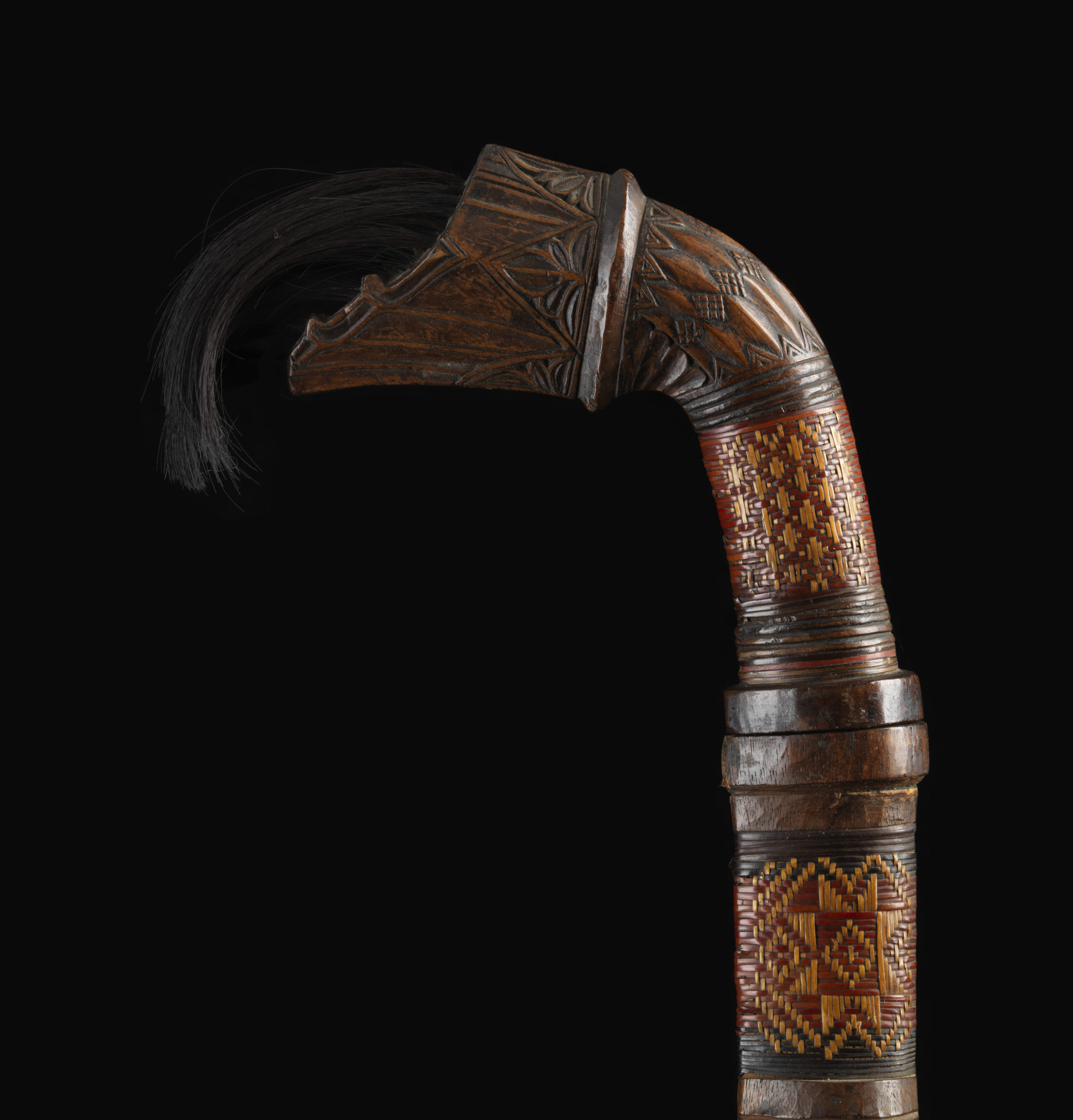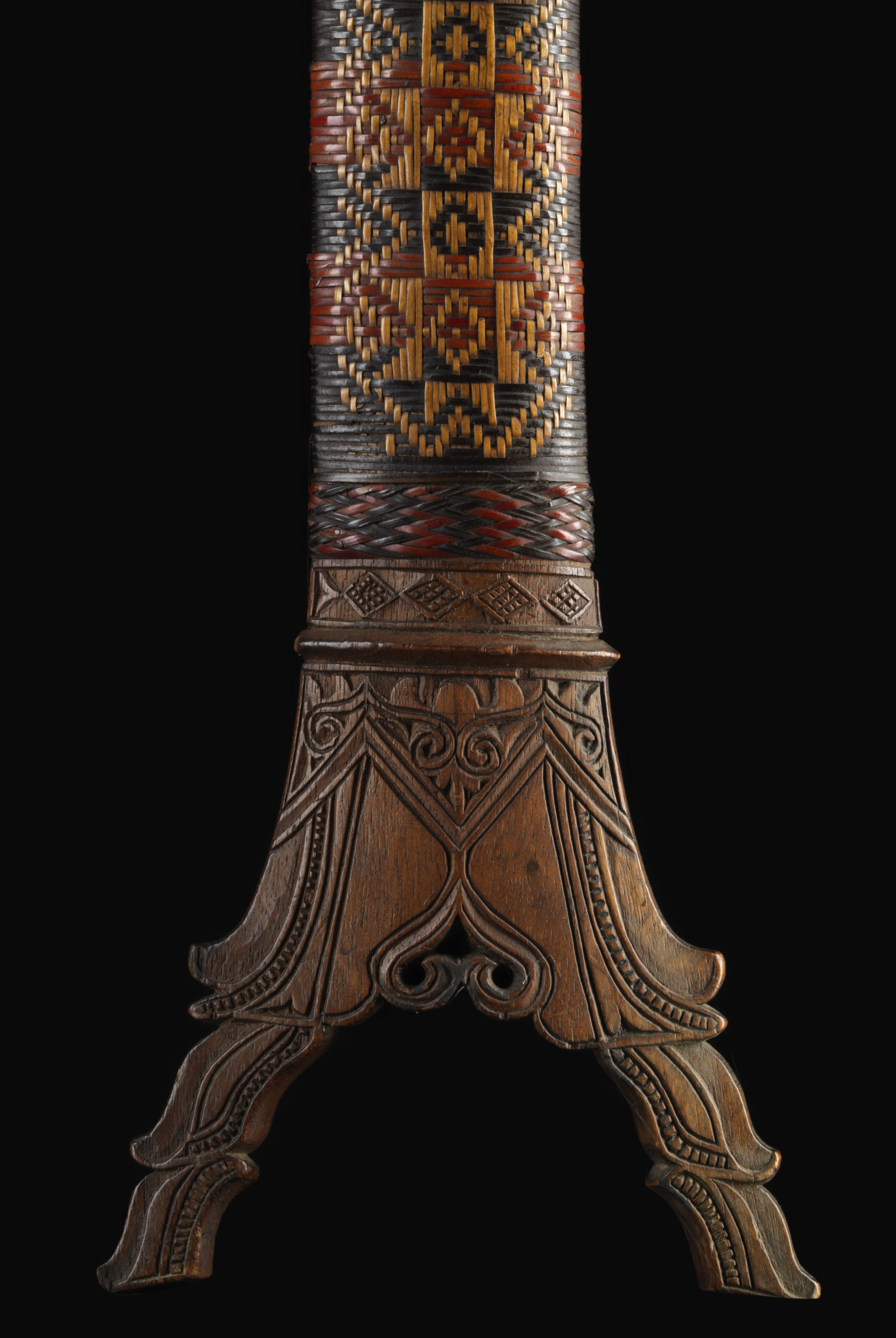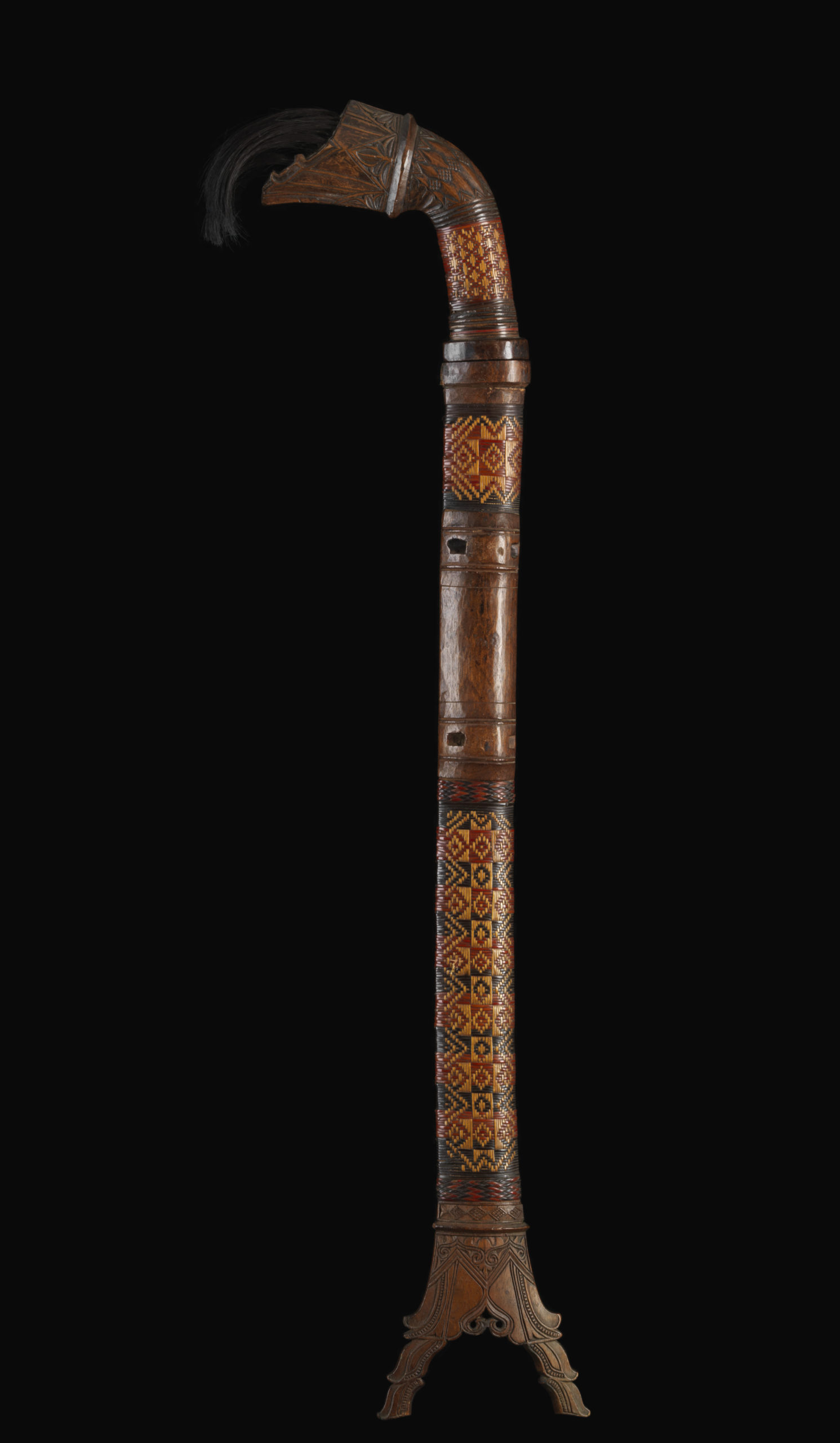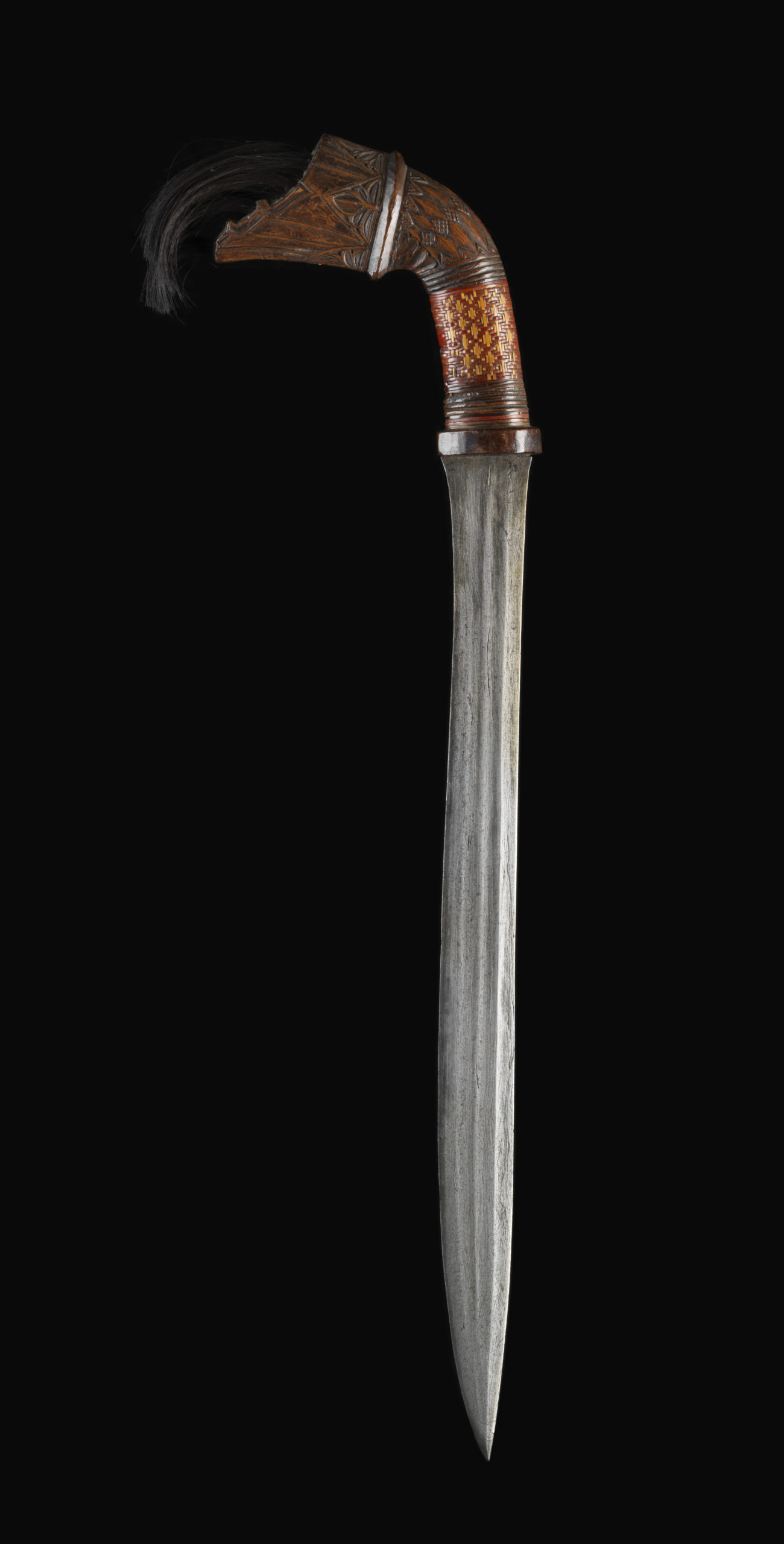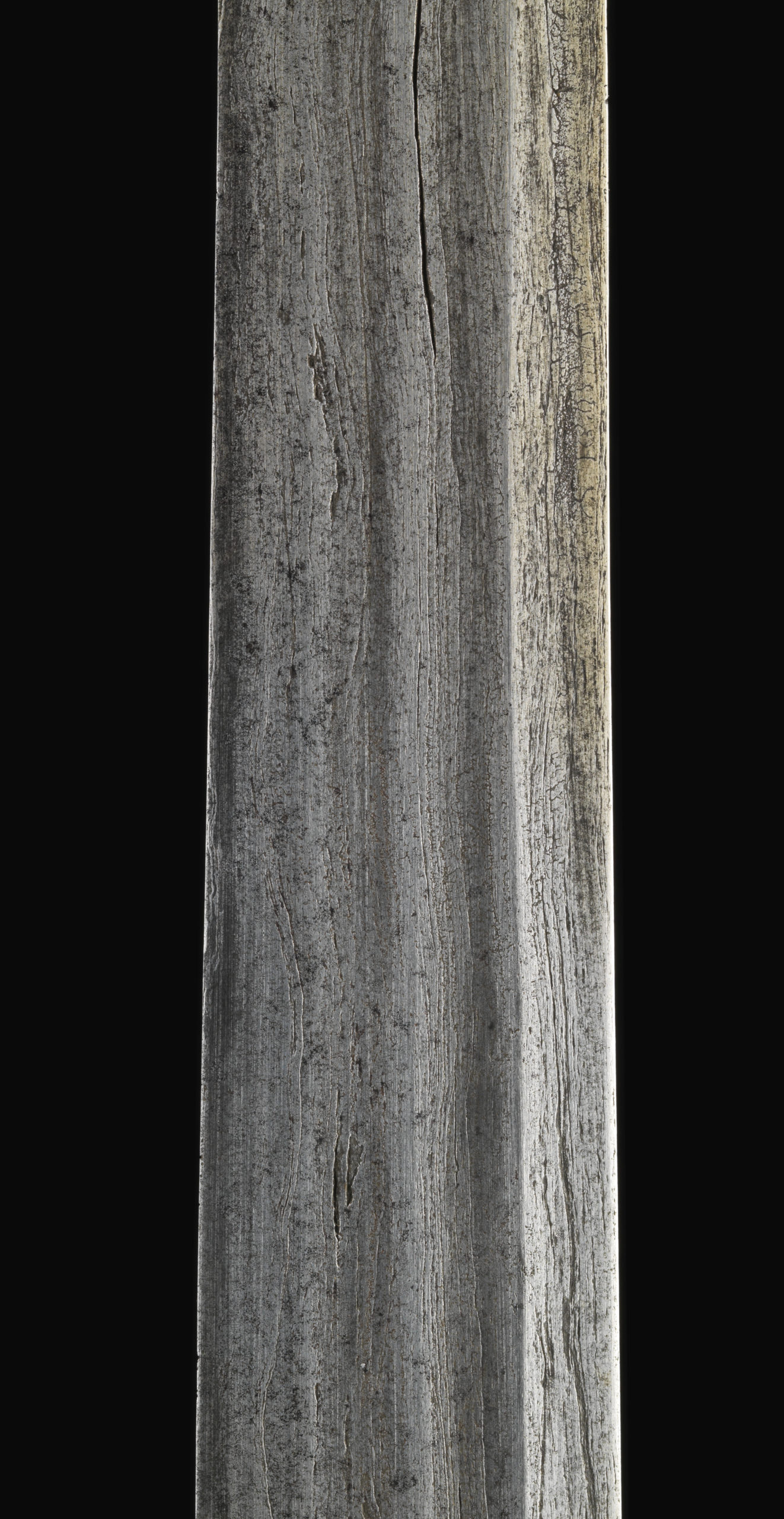Sword „penai“, Bare’e-Toraja
| Object | Sword “penai”, Bare’e-Toraja |
| Culture | Sulawesi |
| Time | 17th – 18th century |
| Dimensions | Length: 64,50 cm |
| Material | Steel, wood, rattan, human hair |
This penai has several characteristics that qualify it as an exceptional specimen of its kind. First of all, the blade with an unusual tongue-shaped centre point should be mentioned in this respect, which can be described as a shortened European sword blade of the 16th century. In later times such blades were no longer manufactured. The striped refining structure, the way of hardening and the double pit cut are typical for Spanish or German blades of this period. The observer can see when “peering along” that the pits run completely straight and end “in nothing”. This means that one cutting edge of the formerly long, double-edged (sword) blade is cut off. It may be assumed with reservation that the blade still dates from the early era of Dutch influence.
What is unusual is the fact that the assembly ensemble, which is otherwise typically decorated with geometric-ornamental motifs in low relief, is made of relatively light wood, which is covered with a three-coloured, high-quality rattan wickerwork. Individual tufts of black human hair are embedded in the bent, enlarged knob section. The base of the sheath is widened, ending in two ends and appears almost like an architectural element, e.g. on the gable of the tongkonan, the traditional house.
The use of light wood is in no way detrimental to the overall quality in this case. Although horn is generally considered a “nobler” material, it was available in such large quantities at the Toraja because of the regular buffalo sacrifices that this general assumption must be questioned, especially since certain trees are of particular spiritual importance to the Toraja.
Supplementing Literature Back to room view



